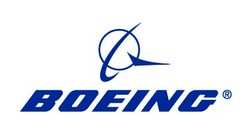FAA Partners With Boeing, GE, Pratt & Whitney On CLEEN
Program
 The FAA will be working with several major manufacturers in
conjunction with its CLEEN program, which is designed to speed the
development and application of environmentally progressive
technologies for cleaner and quieter jet aircraft.
The FAA will be working with several major manufacturers in
conjunction with its CLEEN program, which is designed to speed the
development and application of environmentally progressive
technologies for cleaner and quieter jet aircraft.
As part of the FAA's Continuous Lower Energy, Emissions and
Noise (CLEEN) program, Boeing and the FAA each will contribute up
to $25 million during the next five years to conduct flight
demonstrations of emergent airframe and engine technologies that
have the potential of reducing greenhouse gas emissions and
community noise.
"By combining our resources and expertise, we believe we can
transition promising technologies from development into service
more quickly to help reduce the environmental footprint of
airplanes," said Matt Ganz, vice president and general manager of
Boeing Research & Technology, which is leading the program at
Boeing. "We recognize the importance of protecting our ecosystem
and are looking forward to working with the FAA on a variety of
innovative solutions to help define the future."
 The technologies being developed under the CLEEN program will
be flight tested aboard two demonstration vehicles, a
Next-Generation Boeing 737 in 2012, with a second series of test
flights aboard a yet-to-be-determined twin-aisle airplane in 2013.
This flight-test program builds on the success of the company's
Quiet Technology Demonstrators, which successfully highlighted a
variety of noise reduction technologies during test flights aboard
Boeing 777 aircraft from 2001 to 2005.
The technologies being developed under the CLEEN program will
be flight tested aboard two demonstration vehicles, a
Next-Generation Boeing 737 in 2012, with a second series of test
flights aboard a yet-to-be-determined twin-aisle airplane in 2013.
This flight-test program builds on the success of the company's
Quiet Technology Demonstrators, which successfully highlighted a
variety of noise reduction technologies during test flights aboard
Boeing 777 aircraft from 2001 to 2005.
According to Boeing CLEEN Program Manager Craig Wilsey, the
technologies that will be developed and tested during demonstration
flights include adaptive wing trailing edges and ceramic matrix
composite acoustic engine nozzles. Adaptive trailing edges pertain
to a collection of small controllable devices that are integrated
into the aft portion of the wing. Most traditional wings are
designed for best performance while at cruise, and have performance
compromises during other flight phases. Adaptive trailing edges can
help tailor the wing configuration to reduce fuel burn at takeoff,
climb and cruise, and to reduce community noise at takeoff and
landing. New-generation engines on commercial airplanes are more
efficient, but require materials that are capable of withstanding
higher temperatures than previous engines. Ceramic matrix
composites offer the potential of better thermal and structural
performance, while helping to reduce weight and acoustic
footprint.
 GE Aviation has received an award from the FAA to help fund
three GE technologies, including TAPS II Combustor, Open Rotor and
Flight Management System - Air Traffic Management (FMS-ATM).
GE Aviation has received an award from the FAA to help fund
three GE technologies, including TAPS II Combustor, Open Rotor and
Flight Management System - Air Traffic Management (FMS-ATM).
"GE has always invested in advanced technologies to lower fuel
burn, emissions and noise," said Dale Carlson, Advanced Engine
Systems for GE Aviation. "This CLEEN award will allow us to quicken
our pace on research on key technologies that will provide our
customers with more fuel efficient technologies to help reduce
their costs and their impact on the environment."
GE is developing the TAPS II combustor for its new engine core,
called eCore. eCore will be part of CFM International's new LEAP-X
engine for narrowbody aircraft as well as the new core for GE's
next generation regional and business jet engines. The new core
will offer up to 16 percent better fuel efficiency than GE's best
engines in service today.
Advanced FMS-ATM technology will enable commercial and military
aircraft to routinely fly more optimum trajectories resulting in
less fuel, emissions and noise. The CLEEN award will include
technology demonstrations with Lockheed Martin, AirDat and Alaska
Airlines. The open rotor technology was developed by GE back in the
1980's, but by applying today's advanced data acquisition systems
and computational design tools to the open rotor engine, GE has
improved the design to reduce fuel consumption by 26 percent and
address noise challenges. Last year, GE started wind tunnel testing
with NASA to evaluate counter-rotating fan systems for an open
rotor engine. The CLEEN award will support blade aero-acoustic and
pitch change mechanism research.
 Over at Pratt & Whitney, the FAA has awarded a one-year
contract with extension options which will assist the company in
further developing mature new jet engine technologies aimed at
reduced fuel burn, noise and emissions. The funding will support
ongoing development of advanced technologies for the new PurePower
engine family with the geared turbofan architecture.
Over at Pratt & Whitney, the FAA has awarded a one-year
contract with extension options which will assist the company in
further developing mature new jet engine technologies aimed at
reduced fuel burn, noise and emissions. The funding will support
ongoing development of advanced technologies for the new PurePower
engine family with the geared turbofan architecture.
Under the CLEEN program, the FAA will support the development
and commercialization of CLEEN technologies for current and future
civil subsonic airplanes and jet engines to help achieve the Next
Generation Air transportation System (NextGen) goals. These goals
are intended to increase airspace system capacity by significantly
reducing the impact of noise and air quality emissions on
communities.
 Airborne 10.20.25: FAA Eases On Boeing, Flexjet Lawsuit, Textron Chops eAviation
Airborne 10.20.25: FAA Eases On Boeing, Flexjet Lawsuit, Textron Chops eAviation Airborne-NextGen 10.16.25: Cops Shooting Drones?, Lilium Patents, Trains v UAVs
Airborne-NextGen 10.16.25: Cops Shooting Drones?, Lilium Patents, Trains v UAVs Airborne 10.17.25: Gryder Airport/Gun Arrest, Hegseth C32 Probs, Hartzell Update
Airborne 10.17.25: Gryder Airport/Gun Arrest, Hegseth C32 Probs, Hartzell Update Classic Aero-TV: ICAS Perspectives - Advice for New Air Show Performers
Classic Aero-TV: ICAS Perspectives - Advice for New Air Show Performers Airborne-NextGen 10.21.25: NZ Goes Electric, World Cup UAVs, eAviation Shuttered
Airborne-NextGen 10.21.25: NZ Goes Electric, World Cup UAVs, eAviation Shuttered





